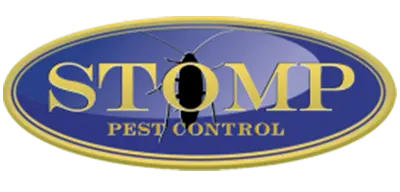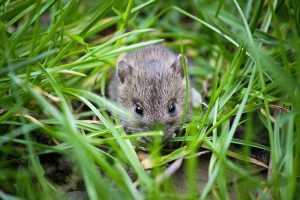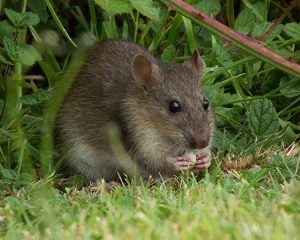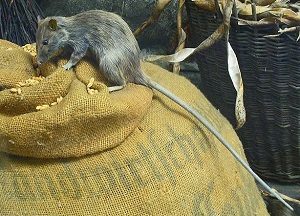Mice might look cute in the movies, but they definitely aren’t cute when they enter your home. Rodents can spread disease, damage your property, and even chew through wires and cords creating a fire hazard. Whether you see a mouse or evidence of their presence from chewed cords or droppings, you need to call for rodent control in Apex immediately!
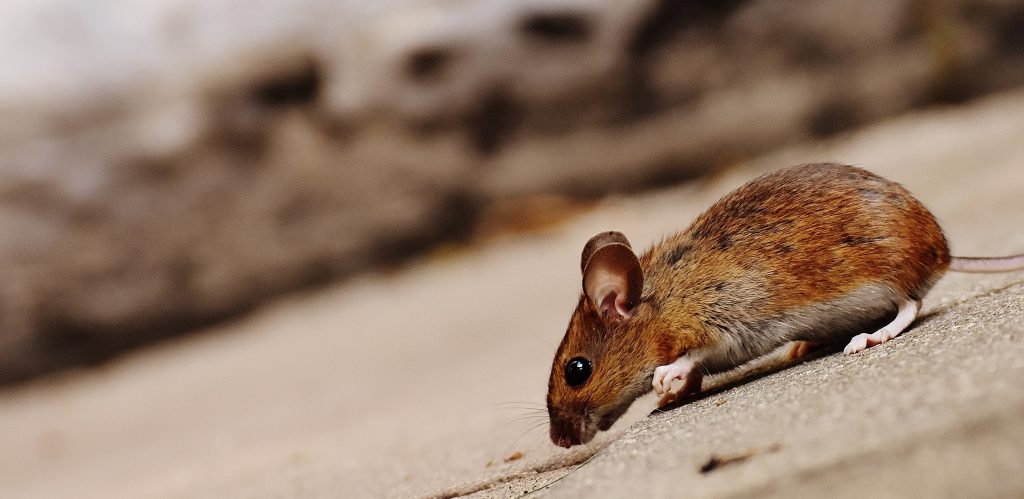
Why Call a Rodent Exterminator?
If you see a mouse or other rodent, your first step may be to head to the hardware store for mouse traps, but DIY rodent control is not the answer. Your rodent infestation may be worse than you realize, or it may not even be a mouse at all, and a few traps certainly won’t keep them from coming back.
Since 2008, Stomp Pest Control has been a trusted source of rodent extermination in Apex to both homes and businesses. Our experience and knowledge allows us to provide the best solution to not only get rid of existing vermin, but to prevent them from coming back.
There are a variety of rodents that are found in the Triangle besides the typical field mouse. Because each species varies in terms of habitats, eating habits, and other factors, our rodent control services may vary according to the pest issue.
-
House Mice
- Generally 2 1/2 – 3 3/4 inches long
- Scientific name: Mus domesticus
- Colorblind and unable to see beyond a few inches
- Able to jump very high, sometimes up to 1 foot
- Only eat small portions of food at a time
- Tend to feed before dawn and after dusk
- Tails range from 2.75- 4 inches long
- Equipped with 4 legs and no antenna
- Round and circular in shape with pointed muzzles
- Can be found throughout the United States
- Dusty and light gray in color with an off-white stomach, but have also been known to have light brown fur from time-to-time
- Tend to feed on seeds, nuts, and several types of vegetation, but have also been known to eat insects
- Considered extremely social aminals, as they have been known to split up into hierarchy-based groups
- Have been known to fit in and socialize with other types of mice, but are threatened by strangers
- Create territories for themselves that are typically between 3 and 6 feet in size give or take
- Able to carry diseases and contaminate food, rat bite fever by biting (though this is extremely rare), as well as spread salmonella through their feces
- Humans have been known to inhale dust with mouse feces which has been known to flare allergies up
- Children have been known to suffer from allergies from ingesting small microdroplets of mouse urine
- Can be expected to leave excessive gnaw marks, a urine-heavy odor, and 4-toed prints
-
Deer Mice
- Generally 5 – 8 inches long, making them one of the larger species of mice in the United States
- Scientific name: Peromyscus maniculates
- Equipped with 4 legs as well as a round, a circular shape, and numerous whiskers
- Build small to medium-sized nests where they sleep and bring food back to before consuming
- Can be found throughout the United States but are known to be more prevalent in the Southern states
- Known to feed around dusk and dawn, feeding mainly on seeds, nuts, berries, fruits, and, at times, small and easy-to-catch insects
- Known to nest in sheltered outdoor spaces including near fence posts, tree logs, haystacks, firewood stacks, and dismantled barns
- In cooler climates, this species of mouse has been known to intrude into garages, sheds, vehicles, attics, basements, and even homes
- Known to transmit the potentially fatal Hantavirus Pulmonary Syndrome via contaminated urine
-
Norway Rat
- Generally 7 – 10 inches long but have been known to grow larger in many cases
- Scientific name: Rattus norvegicus
- Equipped with 4 legs as well as a long oval-shaped body and numerous whiskers
- Light brown and grey in color with sporadic black hairs throughout
- Can be found throughout the United States
- Mainly nocturnal and go to great lengths to feed themselves when food becomes low in supply
- Have been known to gnaw and chew through several thick materials including PVC pipes and lead pipes
- Strategically build burrows and nests closely together in order to support one another
- Considered a very social species of rodent
- Known to inhabit farmlands, hay fields, deserted garages, underneath and around porches, firewood piles, and under concrete slabs
- Can gain access to a home or building through a hole the size of a quarter
- Considered a nuisance due to their habit of gnawing and chewing through nearly anything
- Able to initiate diseases including jaundice, rat-bite fever, cowpox virus, trichinosis, plague, and salmonellosis
- Able to bring fleas into a home or establishment
-
Roof Rat
- Generally 6 – 8 inches long with a tail that is between 6 – 8 inches long
- Scientific name: Rattus rattus
- Equipped with 4 legs, a long and slender body, and an uninviting, a scaly tail, and several whiskers
- Developed their name from regularly finding shelter in upper parts or homes and establishments
- Also referred to as ship rats or black rats
- Can be found in the Coastal Southern states
- Black and brown in color (mixed) with a gray or white underside
- Tails have been known to be longer than their entire bodies at times
- Leave droppings than are noticeably smaller than Norway rats’ droppings
- Known to intrude and take over electrical wires and power sources, as they enjoy the abundance of heat
-
Gophers
- Generally have body lengths of 6 – 8 inches with a tail or 1 – 2 inches
- Scientific name: Geomyidae
- Equipped with 4 legs, around and pudgy torso, and several whiskers
- Have a lifespan of roughly 3 years
- Can be found throughout the United States
- Inhabit areas close to woodland, mountains, and the coast
- Known to intrude on and ruin homeowners’ gardens by digging underneath sensitive areas where plants or crops are planted
- Feed off of earthworms, grubs, roots, bulbs, and, at times, insects
- Live in a burrow system they create for themselves, usually alone
-
Vole
- Generally 4 – 9 inches in length
- Scientific name: Microtus spp.
- Equipped with 4 short legs, compact and round bodies, small to medium-sized tails, and very dense fur
- Also referred to as field mice and meadow mice
- Can be found throughout the United States, primarily in the Northern states
- Active during both the daytime and nighttime
- Known to feed off of vegetation, crops, bark, seeds, grasses, roots, and even insects
- Able to easily cause extensive damage to tree plantings, field crops, flowerbeds, orchards, and other planted vegetation
- Fully capable of carrying and transmitting disease organisms such as plague and tularemia
- Have ears and eyes that are not visible
Moles Or Voles?
Rodents outside your home can be just as problematic as ones inside your home! Moles primarily live underground, building tunnels just below the surface. A large mole population can quickly turn your lawn into a dented, unstable surface that not only looks unattractive, it’s dangerous, too!
Voles are more likely to be found above ground. They tunnel through grassy areas and, in the winter, will tunnel through snow when it’s present.
Our pest control for rodents not only treats the inside of your home, we also treat home exteriors to keep your yard free of these damaging pests!
Contact Us for Professional Rodent Control in Apex
At Stomp Pest Control, we want your home and property to be safe, healthy, and free of pests. Instead of relying on ineffective traps, call us for professional rodent control. We’ll get them gone and keep them gone with monthly pest control packages as low as $15/month and a 100% satisfaction guarantee! Contact us today at 919-231-3292 or using the form below to schedule service or get more information!
